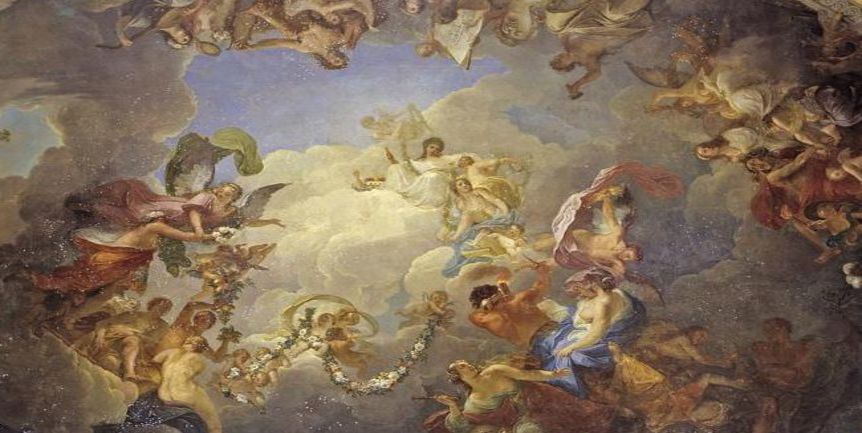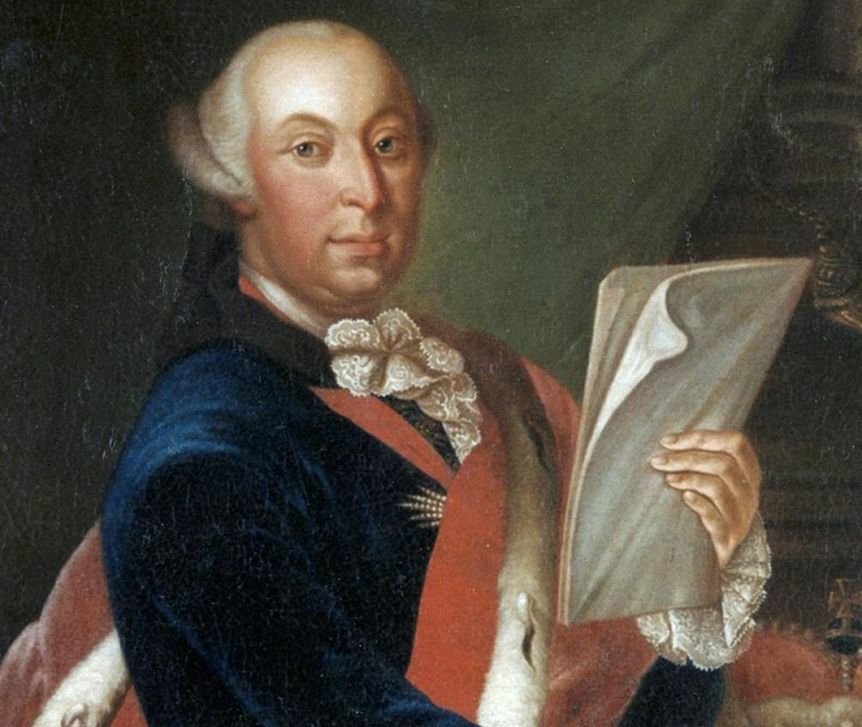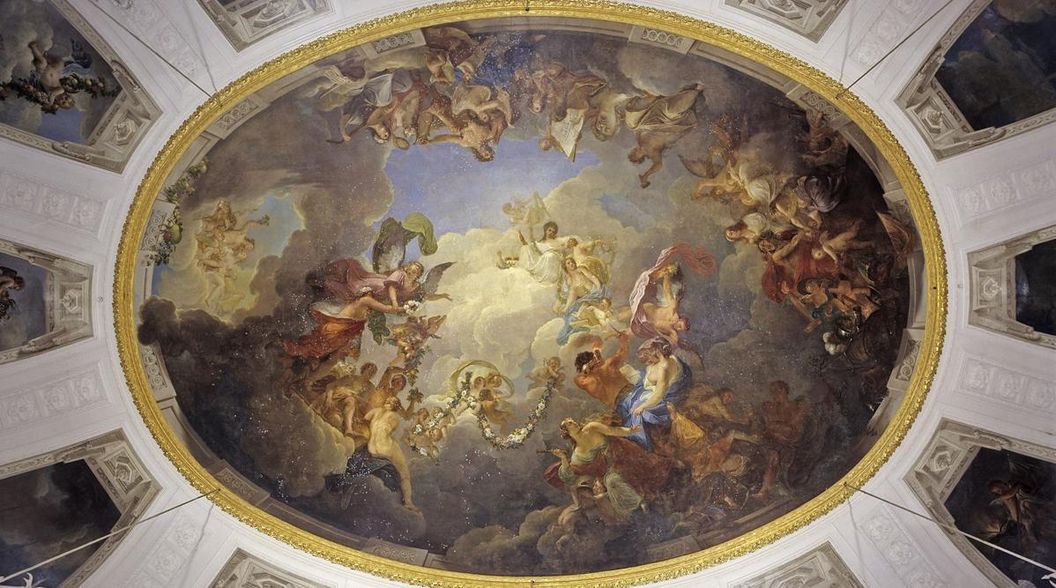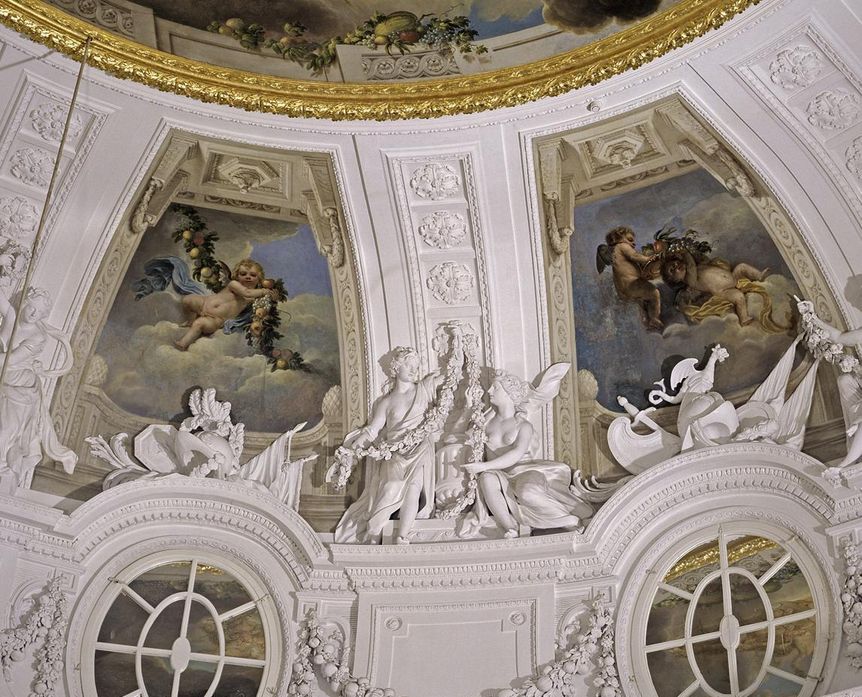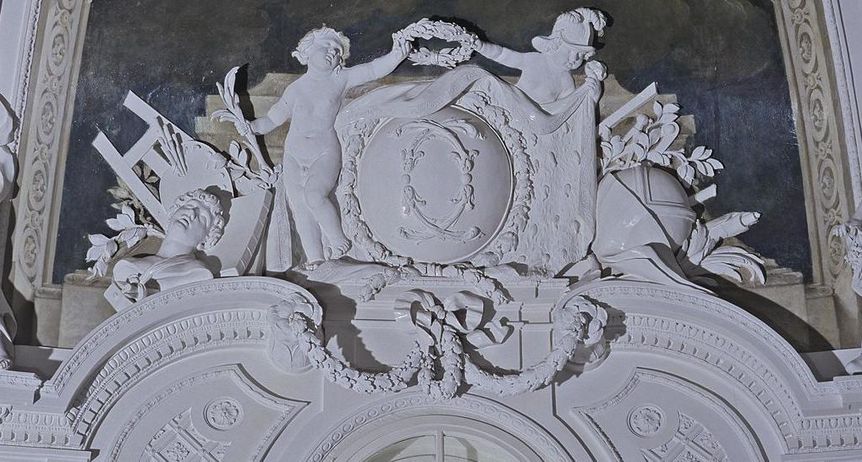Dedicated to the welfare of the countryThe ceiling painting
Educated contemporaries of Duke Carl Eugen immediately understood the narrative presented by the ceiling painting in the White Hall of Solitude Palace. Today's visitors may need a little help. The objects that the figures hold in their hands are hidden clues to understanding the scenes.



